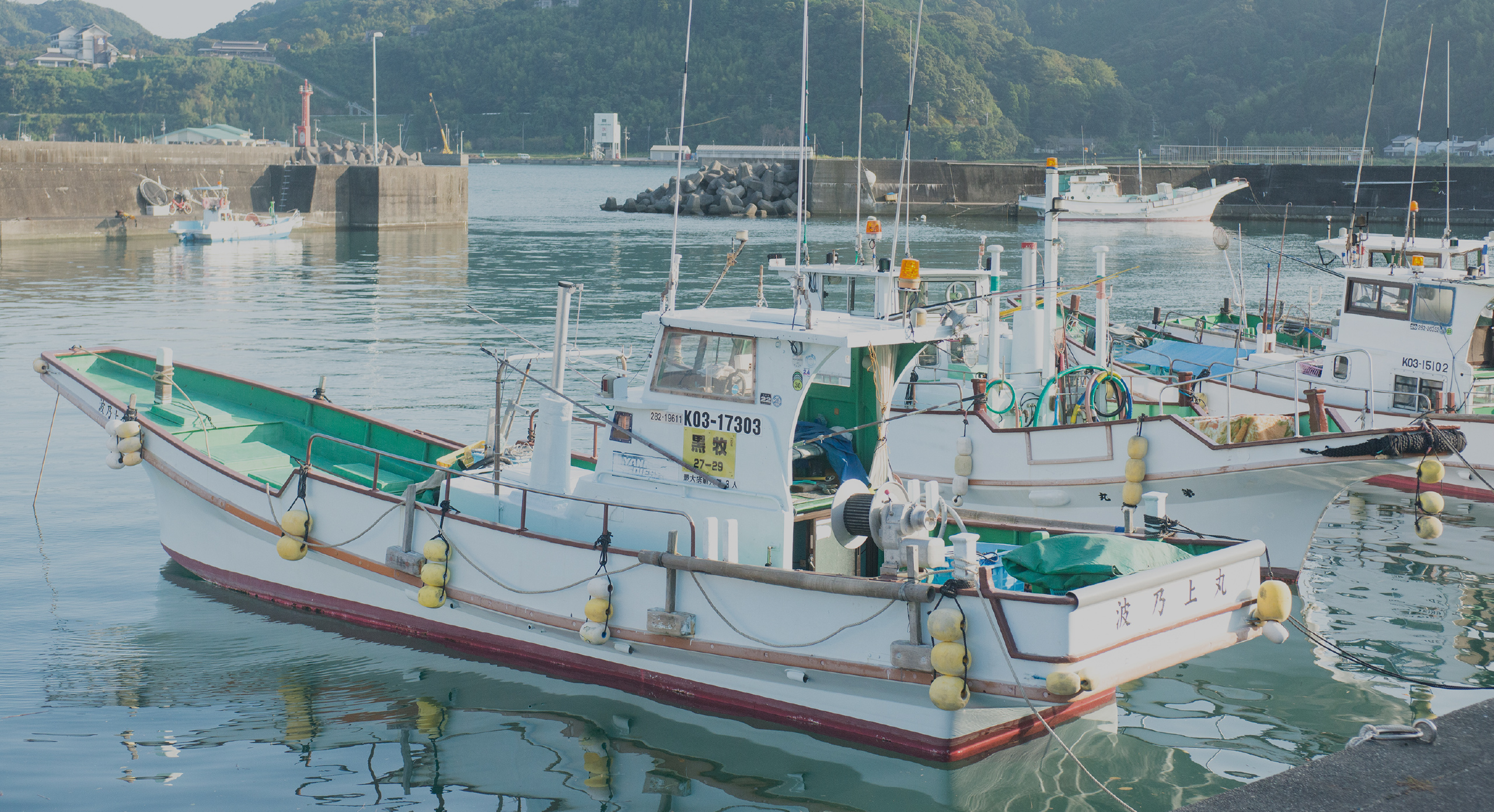Nakatosa Town is nestled in the central heart of Kochi Prefecture. It consists of 3 areas, the Kure Area facing the Pacific Ocean famous for its skipjack fishing of Bonitos, the Kaminokae Area with small fishing villages along the coast offering sightseeing of fishery, and the inland Onomi Area farming area surrounded by 300 meters tall terrain mountains where the clear waters of the Shimanto River originates.
Many people throughout the Nation visit the festival of “Kure Hachimangu Shrine Taisai” and “Bonito Festival” which are
among the 3 major festivals of Kochi. Also, Nakatosa Town is known as one of the profound sightseeing place in the Prefecture for its scenic beauty of the last remanence of Japan Stream, the Shimanto River with many scenic sites such as the Chinkabashi bridge (Submersible Bridge) and also the Daruma Sun Rise. Access is also close to Kochi City and the airport.
The fisherman township of Kure has historically developed on fishery and shipment of logs from the upper Shimanto basin.
The township is designated as the “National Important Cultural Landscape”.
The scene of Nakatosa Town Kure has the remanence of an old fishing village.
Next to the entrance of the houses, you will see the sink table and fishing gear rods, the fishermen preparing their gear for fishing next day and wives slicing the catch of the day for dinner. At the fish market continuing 400 years, fresh fish is on the shelf, and you can hear the lively voices of fishermen’s wives in Tosa dialect. Good luck flags for large catch, glass floats, large baskets (which used to grow sardines which are baits for the bonito fishing) are decorated on the wall and ceiling.
With the harbor surrounded by fisherman’s houses, the township residents and the port are unified blended as one. On a clear weather day, the laundry seems happily blowing in the ocean breeze.
Kochi receives a lot of typhoons each year. Hence, the houses have a special plastered wall to prevent the strong winds and rain. The “Tosa Shikkui” is a special wall coating originally from Kochi which is strong against winds and prevents water penetration. The “Mizukiri Kawara” is a special wall tile installed on the wall in layers to prevent heavy rain and sunlight.
This wall tile symbolizes the wealth of the inhabitants of the house. With typhoons every year, the special ingenuity for the tile lasting 100 years has been inherited by the craftsman fabricating this tile. From the middle age to modern period, Kure has developed as an important focal port to ship products of the Shimanto Basin to the Kansai area (western Japan, Osaka).
On the street where Nishioka Sake Brewery (Kochi’s oldest sake brewery) you can find red brick walls which were brought to Kure from the Kansai area during this period. In these times, there were many merchants in Kure handling firewood and charcoal for fuel. The warehouses to store the charcoal still exists from this period.
In the township, you can find various historical artifacts reflecting the peoples gratitude, respect to nature and the gods such as Kure Hachimangu Shrine overlooking Kure, the Inarijinjya Shrine and in the residential area the Ebisujinjya Shrine worships the fish sculpture which is an ornament for good luck in fishing and prosperity in business.
Furthermore, as a community that exists and perspires on bonito fishing, at Furusato Beach, there is a special monument standing to dedicate, tribute and thank the bonito.
Today, the people of Kure continue to carry out their original festivals and inherit ancient rituals for hundreds of years based on their beliefs of respect to tradition and religion.


